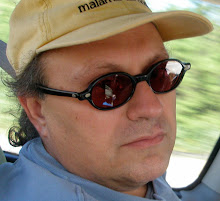Date: Friday, December 14, 1:30 pm
Speaker: Maria Elena Buszek
Maria Elena Buszek is a critic, curator, and assistant professor of modern and contemporary art at the Kansas City Art Institute. She is the author of numerous catalog essays for exhibitions in museums and galleries both in the United States and abroad, and her writing has appeared in such journals as Art in America, Woman's Art Journal, TDR: The Journal of Performance Studies, Photography Quarterly, and Surface Design Journal. Her 2006 book, Pin-Up Grrrls: Feminism, Sexuality, Popular Culture, was nominated for the College Art Association Charles Rufus Morey Book Award. Buszek is also a regular contributor to the popular feminist culture magazine, Bust. In addition to feminist theory and aesthetics, she has written on popular visual culture and contemporary crafts. She is currently editing the anthology Extra/ordinary: Craft Culture and Contemporary Art, examining the evolving relationship and tensions between traditional definitions of "art" and "craft" in the art world today.
1 comment:
Wow. I must not be the only who took this long to get around to checking out the blog. It looks great. Thanks, Vince.
As far as the last lecture went, I have my doubts about any radical changes the rise of craft in contemporary art can bring about. To me, the obvious reason the "quilting grannies" are quite happy not getting involved in hip movements like 'revolutionary knitting' is that there is nothing all that revolutionary about it. It's not the knitting that makes it revolutionary, it's the group of young people with similar political minds coming together and hanging out. It could just as easily be "revolutionary whittling."
So to me, people for whom quilting means something more than craft, but maybe a heritage, or part of a folk culture, will want to keep it for themselves. In their minds protecting it from the contemporary art chipper/shredder that in a decade will barely remember Gee's Bend.
The underlying problem, is that so much of this craft that is being made, is so self-consiously crafty. At his lecture, the editor of American Craft, Andrew Wagner, talked about the parallels between the rise of craft and design in the early sixties and today and was very optimistic about another convergence of craft, art, and design. I am not so excited. It just seems to be more of the same pastiche, but instead of commercial and pop imagery, we've moved on to folk/craft materials and techniques.
Post a Comment